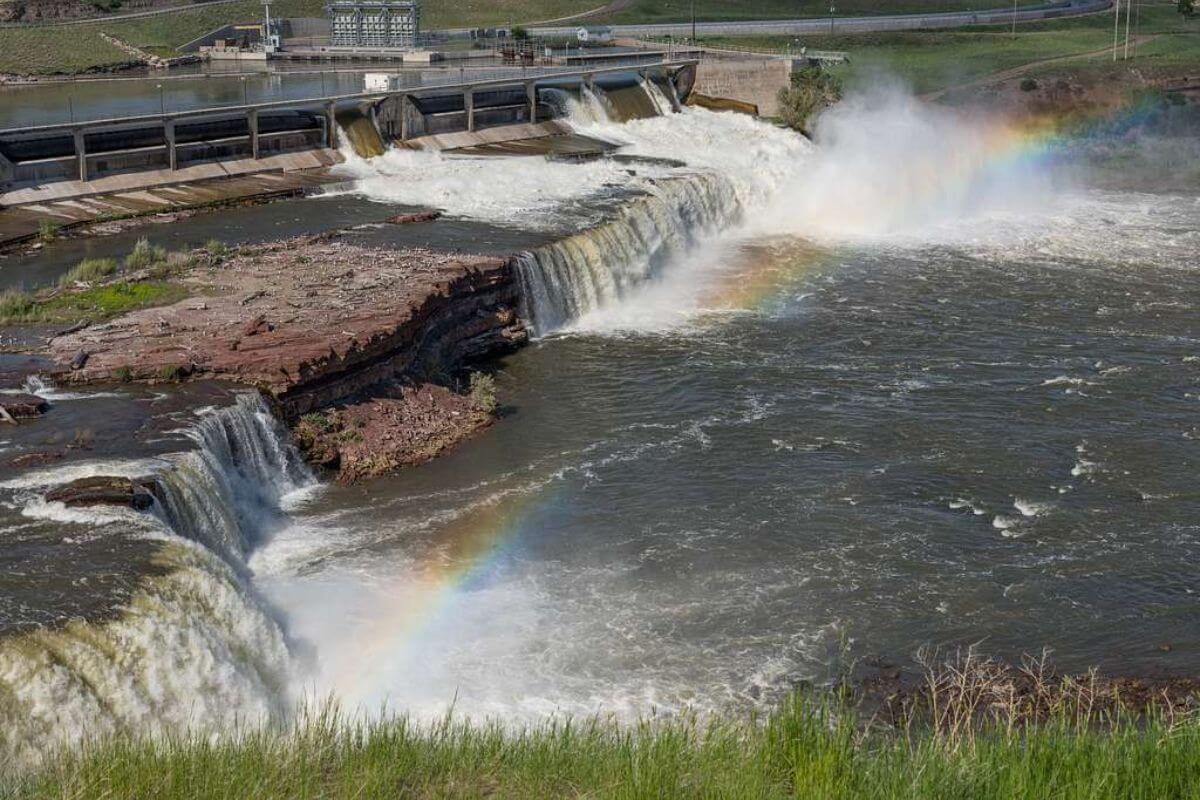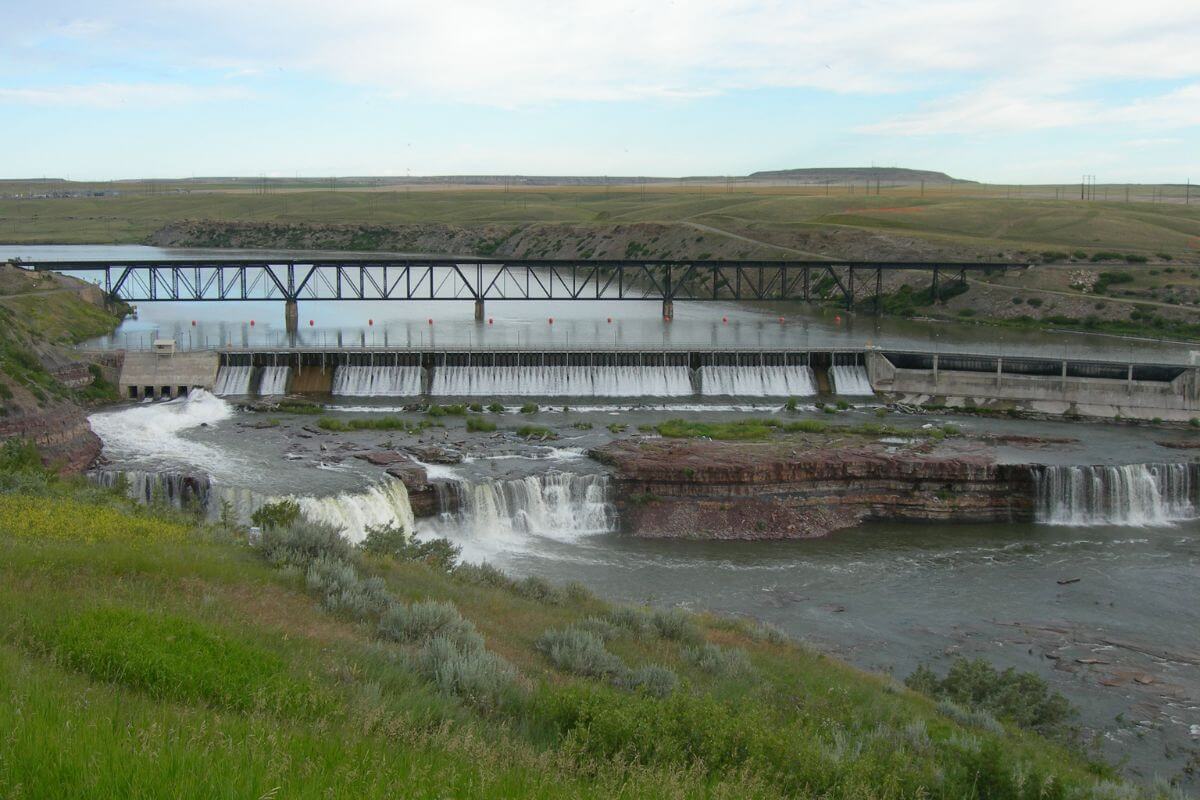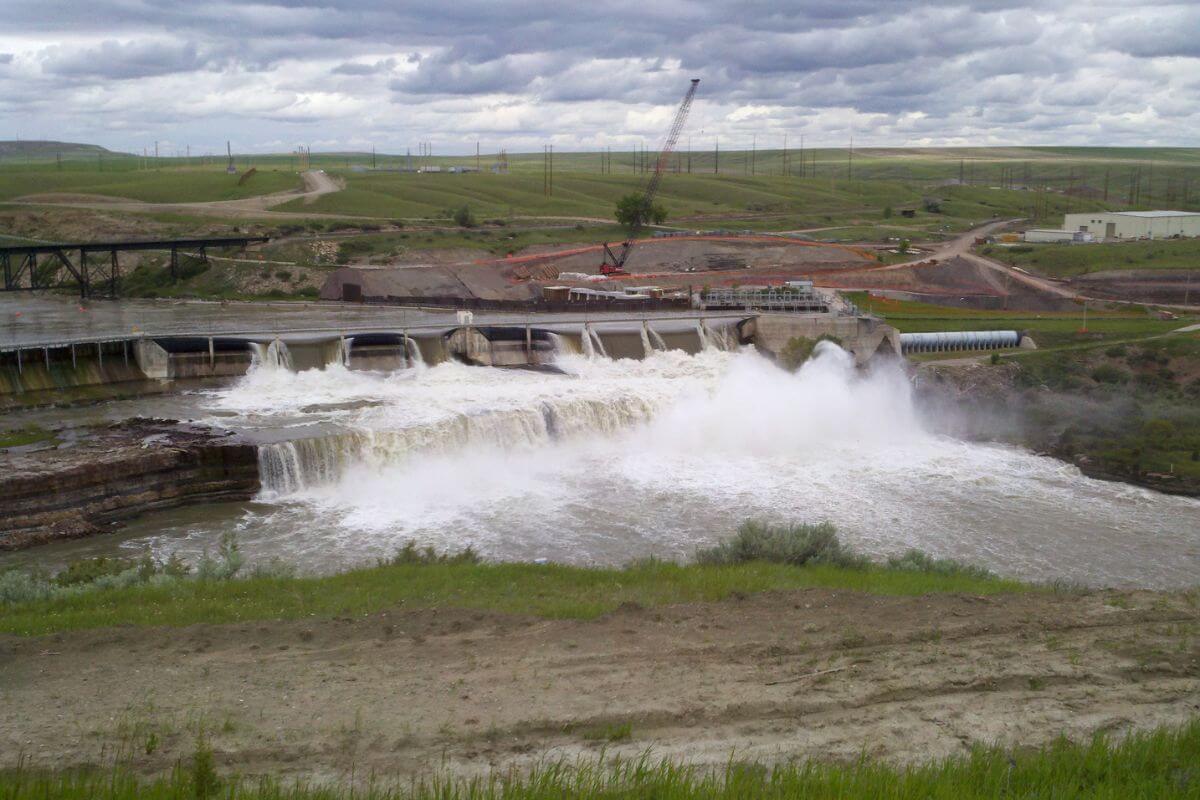Rainbow Falls in Montana is the second-largest waterfall on the Missouri River. Discovered by explorers Lewis and Clark, this stunning waterfall with a wide crest is rich in history.
Let’s explore Rainbow Falls. We’ll share its story with Lewis and Clark, discuss the impact of the Rainbow Dam on the falls, and guide you to a viewing spot to witness this landmark. Additionally, we’ll introduce the Rainbow Falls Trail, a part of a larger trail system providing many activities and stunning scenery.
- Related article: Explore Waterfall Sites in the Treasure State
Why is Rainbow Falls important today? Beyond its beauty, it holds historical significance. As we dive into its history and nearby trails, you’ll witness a unique blend of nature and history in Montana.
Ready to see where these elements come together in stunning beauty? Let’s discover Rainbow Falls together.
4 Key Takeaways on Rainbow Falls
- Rainbow Falls is the second-widest waterfall in Montana after Crooked Falls. The falls are renowned for their size and the colorful mist that gives them their names.
- The construction of Rainbow Dam in 1910 significantly altered the volume of water over Rainbow Falls. This showed the impact of human innovation on nature.
- Designated as a High Potential Historic Site on the Lewis and Clark National Historic Trail, Rainbow Falls holds significant historical value.
- The Rainbow Falls Trail is part of the larger River’s Edge National Recreation Trail, providing a 53-mile adventure route with options for all activity levels.
About Rainbow Falls

| Location Coordinates | Height | Nearby Attraction | Location |
| 47.5186° N 111.3003° W | 47 feet (14 meters) | Clark National Historic Trail | Missouri River, Great Falls, Montana |
Rainbow Falls is a beautiful and historic waterfall and is the second largest of the five waterfalls in the Great Falls of the Missouri River.
Rainbow Falls drops 44 feet and stretches over 1,000 feet wide, making it the second-widest waterfall in Montana after Crooked Falls. But the falls is not just famous for its size.
The Missouri River, where Rainbow Falls is located, has changed significantly. The water flow has decreased since the Rainbow Dam was built in 1910 for hydroelectric power. However, the falls are still a beautiful sight, showcasing nature’s beauty and human innovation.
In 1805, during the Lewis and Clark expedition led by Meriwether Lewis, Rainbow Falls was discovered and initially named “Handsome Falls.”
Lewis was captivated by its beauty, describing it as “one of the most beautiful objects in nature.” Later, Rainbow Falls originated from the colorful mist that forms when sunlight interacts with the water.
Today, Rainbow Falls is not just a landmark waterfall. It’s a High Potential Historic Site on the Lewis and Clark National Historic Trail. This means it’s important for its history, marking a special spot where the famous explorers Lewis and Clark traveled.
You can get to Rainbow Falls by road or on foot. Just 1.5 miles west, there’s the USFS Lewis and Clark Interpretive Center. This place teaches you more about the area’s history and is a great spot for learning about the falls’ stories.
It’s also important to note that there’s another Rainbow Falls in Glacier National Park. This beautiful waterfall has the same name as the one in Great Falls and is a must-see for nature lovers.
About the Rainbow Falls Trail

| Difficulty | Length | Average Completion Time | Destination | Route Type |
|---|---|---|---|---|
| Moderate | 1.9 miles (around 3 km) | 39 minutes | Rainbow Falls | Out and back |
The Rainbow Falls Trail is not just any path; it’s part of something bigger and more exciting. It’s a key section of the River’s Edge National Recreation Trail, a 53-mile adventure route connecting various interest points.
Getting to the Rainbow Falls Trail is like the start of a treasure hunt, leading you to discover not just one but two amazing waterfalls.
Following 15th Street N to Rainbow Dam Road, a quick 6-mile drive leads to Rainbow Dam and Rainbow Falls. These are two of the five breathtaking waterfalls along the River’s Edge Trail.
Parking at the Rainbow Falls Trail is sorted with spots at key locations like the Rainbow Trail, Lewis & Clark Overlook Trailhead, 67th Street Parking area, and Upper Ryan Parking area. This means more time enjoying the trail and less time looking for a parking spot.
Rainbow Falls Final Thoughts

Rainbow Falls serves as a reminder of how beautiful and peaceful Big Sky Country truly is. It’s more than just a waterfall — a special part of Montana, offering fresh and untouched nature to all who visit.
If you’re planning to hike the Rainbow Falls Trail, get ready for a fun adventure that ends with a beautiful waterfall. The hike is as wonderful as the waterfall, with every step showing off the state’s amazing scenery.
This experience will enhance your trip to Montana, whether you love nature, enjoy photography, or just like spending time outdoors. Rainbow Falls offers a memorable story and a special connection to nature.
Rainbow Falls FAQs
1. Is There an Entrance Fee to Visit Rainbow Falls?
Rainbow Falls does not have an entrance fee, as it is part of the natural landscape. However, nearby attractions, such as the Lewis and Clark Interpretive Center or state parks, may have admission fees.
2. Can Visitors Swim or Engage in Water Activities at Rainbow Falls?
Due to safety concerns and the powerful currents of the Missouri River, swimming and water activities are not permitted at Rainbow Falls.
3. Is Rainbow Falls Accessible to All Visitors, Including Those With Mobility Challenges?
While Rainbow Falls is easily accessible by roadway or footpath, the terrain around the falls may present challenges for visitors with mobility impairments. Some viewing areas may require navigating stairs or uneven surfaces.
Dive into the captivating state of Montana with these informative articles:
- Guide to Pioneer Waterfall in Montana
- Guide to Ptarmigan Waterfall in Montana
- Explore Montana’s Raven Quiver Falls
- Visit Redrock Waterfall in Montana

